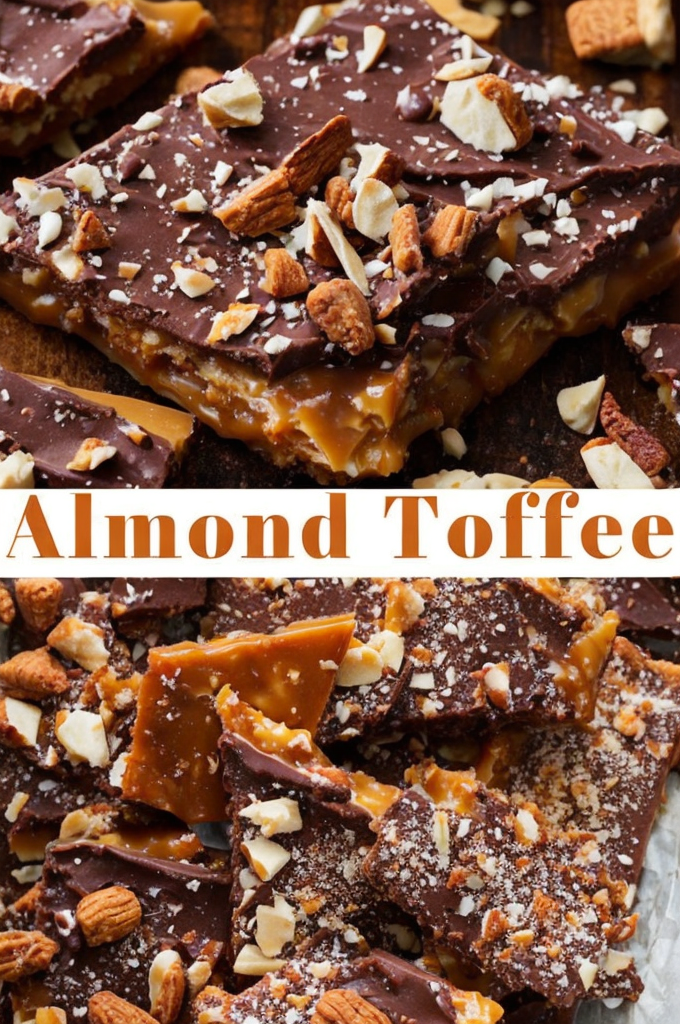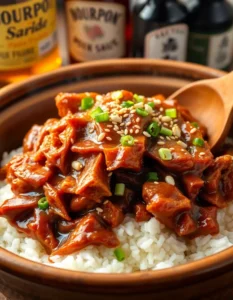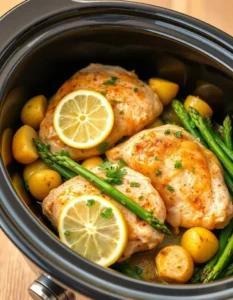Irresistible Homemade Toffee Recipe: A Sweet Treat for Dessert Lovers Everywhere
The Irresistible Homemade Toffee Recipe is a must-try for dessert lovers everywhere. This delightful blend of buttery richness and caramelized sweetness makes it an unbeatable indulgence. Whether you’re a seasoned baker or experimenting for the first time, this recipe promises a culinary experience that’s both thrilling and rewarding. Imagine the aroma of melting butter and sugar filling your kitchen, creating a symphony of flavors that’s hard to resist. Each bite offers a crispy, melt-in-the-mouth texture, providing pure joy with every piece.
Toffee has been a long-standing favorite among confectionery delights, and for good reason. Its simple components transform into a gourmet treat with a little patience and precise technique. Discover the charm of crafting your own toffee and savor the satisfaction of homemade sweets. It’s excellent for gifting or making any occasion special with its classic appeal and versatile serving options.
Quick Recipe Highlights
- Flavor Profile: Sweet and buttery with a hint of caramel and a touch of saltiness that balances out the overall richness.
- Texture: Crisp and crunchy with a smooth, buttery mouthfeel that melts delightfully with each bite.
- Aroma: Rich caramel notes with a hint of nuttiness from toasted almonds or chocolate.
- Visual Appeal: Golden brown with an attractive glossy finish often accented by a sprinkle of nuts or a drizzle of chocolate.
- Skill Level Needed: Basic candy-making skills are required, such as temperature monitoring and timing for caramelization.
- Special Equipment: A candy thermometer is essential to achieve the perfect toffee texture and prevent burning.
Recipe Overview
- Difficulty Level: Rated medium due to the precise temperature control needed during the caramelization process, ensuring the sugar reaches the right stage without burning.
- Category: Dessert and Confectionery, an excellent treat for sweet cravings or a finishing touch to a dinner party.
- Cuisine: Primarily associated with British and American culinary traditions, toffee has found its place globally.
- Cost: Relatively low-cost ingredients make it an affordable sweet treat. Most items are pantry staples or easy to find.
- Season: Suitable year-round but especially popular in cooler months, as a cozy treat or festive gift.
- Occasion: Perfect for holidays, birthdays, or as a homemade gift for special occasions.
Why You’ll Love This Recipe
The taste and texture of this homemade toffee will transport you to a world of sweet delight. The balance of flavors—from the buttery base to the caramelized finish—is sure to please any palate. The recipe’s ability to transform simple ingredients into a sophisticated dessert showcases the magic of from-scratch cooking.
Convenience is at the heart of this toffee recipe. With minimal preparation and a short list of ingredients, creating a batch is straightforward and efficient. The method encourages creativity and offers room for variations like nuts or chocolate, tailoring it to fit your personal preference.
From a nutritional standpoint, homemade toffee can be a better choice than store-bought options, as you control the quality and quantity of ingredients, minimizing additives and sugars as desired.
Socially, making toffee is a fun and engaging activity, whether done solo or with friends. It’s an excellent conversation starter, and sharing homemade treats fosters community and connection.
Economically, crafting homemade sweets is budget-friendly. It’s a practical way to indulge in luxury without the associated costs of gourmet store-bought confections. Plus, the satisfaction of creating it adds value beyond the monetary savings.
Historical Background and Cultural Significance
The origin of toffee dates back to the British Isles, where it became popular in the 19th century. Its creation is often linked to the abundance of sugar harvested from sugar beet during that time, which bolstered its presence in confectionery.
Toffee holds cultural significance in the UK, with variations like bonfire toffee, enjoyed during Guy Fawkes Night celebrations. It’s also a staple treat during the holiday season, cherished for its warming sweetness.
Over time, toffee has evolved, incorporating nuts and chocolate to enhance its flavor and texture. These changes have helped cement its place in the pantheon of beloved sweets across cultures.
Regional variations abound, from the East Coast’s nut-infused versions to buttercrunch adaptations popular in North America. Each adaptation brings a unique twist to the classic recipe.
Ingredient Deep Dive
Butter is pivotal in the toffee recipe, lending its rich flavor and smooth texture. Its history in baking and confectionery is storied, dating back to ancient times when it was a luxury ingredient. When selecting butter, opt for unsalted, high-fat content for the best flavor.
Sugar, primarily white granulated, caramelizes to form the toffee’s essential flavor profile. The selection of sugar impacts the sweetness and color of the final product. Store it in a cool, dry place to prevent clumping and use quality sugar for a flawless caramelization process.
Common Mistakes to Avoid
- Incorrect Temperature: Failing to reach the “hard crack” stage results in a chewy instead of crunchy toffee.
- Rushed Cooking: Patience is key in caramelization; cooking too quickly can burn the sugar.
- Ignoring Stirring: Regular stirring prevents uneven cooking and potential burning.
- Humidity: On humid days, toffee may not set properly. Ensure a dry environment while cooking.
- Wrong Pan Size: Overcrowding causes uneven cooking. Use a pan that fits the volume of ingredients.
- Not Prepping Ingredients: Have everything ready to avoid delaying while cooking.
- Skipping the Thermometer: Visual cues aren’t reliable; a candy thermometer ensures precision.
- Skipping Cooling: Allow your toffee to cool thoroughly to ensure the right texture.
- Butter Substitutes: Using margarine affects flavor and texture, sticking with butter yields a superior product.
Essential Techniques
Caramelization is vital in toffee making. It’s the process of heating sugar to achieve a rich brown color and complex flavor. Mastering it involves recognizing color changes and knowing when to remove heat to avoid burning. The right caramelization occurs at around 300°F, indicated by syrup’s golden hue and nutty aroma.
Pro Tips for Perfect Toffee
- Always use a candy thermometer to monitor sugar accurately.
- Maintain low to medium heat to control caramelization, preventing scorching.
- Use heavy-duty pans to promote even heat distribution.
- Butter the sides of your pan to prevent sugar crystallization.
- Consider sea salt finishing for contrast in flavor, enhancing sweetness.
- Cool the toffee on parchment for easy release once it sets.
- Adding vanilla post-cooking enriches flavor with aromatic depth.
Variations and Adaptations
Regional variations add nuts, such as pecans or walnuts, for a nutty crunch. Seasonal adaptations could incorporate spices like cinnamon or nutmeg, giving a festive twist. For dietary needs, substituting vegan butter and sugar alternatives can create vegan-friendly versions that don’t compromise flavor.
Serving and Presentation Guide
Present your toffee with flair, arranging pieces on a ceramic plate or wooden board for a rustic touch. Complement toppings like dark chocolate drizzle or a dusting of powdered sugar enhance both aesthetics and flavor. Temperature plays a role; serving at room temperature maintains the ideal texture without becoming too hard or sticky.
Wine and Beverage Pairing
Pair toffee with dessert wines like Muscat or Port that complement its sweetness. Non-alcoholic alternatives like spiced chai or rich coffee balance toffee’s buttery richness. Consider temperature too, serving chilled beverages to contrast with the toffee’s warmth.
Storage and Shelf Life
Store your homemade toffee in an airtight container to maintain its crisp texture, keeping it away from moisture to prevent softening. It typically lasts up to two weeks at room temperature, or extend shelf life by refrigerating up to a month. Be aware of moisture absorption and reheat gently if needed to restore crispness.
Make Ahead Strategies
Prepare the toffee up to two weeks in advance and store as instructed for convenience during busy periods. If making ahead, consider separating batches with parchment to maintain piece integrity. Reheat gently if crispness is compromised when stored, ensuring freshness at the time of serving.
Scaling Instructions
Halve this toffee recipe for smaller gatherings, adjusting cooking time slightly but maintaining temperature vigilance. Doubling or tripling requires larger cooking kitchens to ensure even heat distribution. It’s crucial to adjust equipment accordingly, using wide pans to prevent overflow.
Nutritional Deep Dive
This homemade toffee offers balanced macros when consumed in moderation, featuring a reasonable carbohydrate profile from sugar and a notable fat content from butter. While primarily a treat, it provides quick energy boosts and satisfies sugar cravings with controlled quality ingredients.
Dietary Adaptations
To make this toffee gluten-free, ensure all processed ingredients are certified gluten-free, focusing on starch substitutes when needed. For dairy-free versions, use plant-based butter alternatives, checking specific product suitability regarding flavor impact and texture change.
The Recipe
Irresistible Homemade Toffee
Serves: 16 pieces
Prep Time: 15 mins
Cook Time: 30 mins
Total Time: 45 mins
Kitchen Equipment Needed
- Candy thermometer
- Heavy-bottomed saucepan
- Wooden spoon
- Baking sheet
- Parchment paper
Ingredients
- 1 cup unsalted butter
- 1 cup granulated sugar
- 1 tablespoon light corn syrup
- 1/4 teaspoon salt
- 1 teaspoon pure vanilla extract
- 1 cup chocolate chips (optional)
- 1/2 cup chopped nuts (optional)
Directions
- Prepare a baking sheet lined with parchment paper. Set aside.
- In a heavy-bottomed saucepan, melt butter over medium heat.
- Stir in sugar, corn syrup, and salt until dissolved.
- Insert a candy thermometer and bring the mixture to a boil, stirring occasionally.
- Continue cooking until the mixture reaches 300°F (hard crack stage).
- Remove from heat and stir in vanilla extract immediately.
- Pour the hot toffee onto the prepared baking sheet, spreading evenly.
- If using, sprinkle nuts and chocolate chips over the hot toffee.
- Allow the toffee to cool completely before breaking into pieces.
Recipe Notes
- Ensure consistent stirring to avoid sugar crystallizing.
- Store in airtight containers to maintain crispness.
- Add a pinch of sea salt on top for extra flavor contrast.
Troubleshooting Guide
Achieving ideal toffee texture means reaching the right temperature—short by even a few degrees can result in sticky texture rather than a crisp crunch. If you accidentally overheat, monitor changes closely to catch any darkening before burning occurs, adapting techniques for future attempts.
Recipe Success Stories
Readers praise this toffee for its ease and deliciousness, often customizing it with personal spins based on preferences or dietary constraints. Common success involves exploring variations like incorporating sea salt or infusing with additional flavors like espresso, which gather admiration at family gatherings.
Frequently Asked Questions
How to prevent toffee from becoming sticky?
Ensure that your toffee reaches the “hard crack” stage of 300°F to promote ideal texture, storing in airtight conditions to ward against moisture-related stickiness.
Can I substitute margarine for butter?
While it’s possible to use margarine, results significantly affect flavor and texture, often altering traditional buttery richness—pure butter provides superior quality.
Do elevated temperatures affect cooking times?
Yes, altitude impacts boiling points; adjust cooking times, using a calibrated candy thermometer for precise measurements during caramelization.
Why did my toffee crystallize?
This often results from undissolved sugar; ensure thorough dissolving initially and apply constant stirring to prevent unwanted crystal formations.
Can I use coconut sugar?
Coconut sugar is an alternative, though flavor and colors might differ; monitor closely as its lower caramelization threshold requires vigilance with heat.
Is it possible to make toffee without nuts?
Absolutely, toffee can be prepared nut-free; simply omit them, or enhance texture using alternative mix-ins like seeds or dried fruit.
Additional Resources
Explore related recipes to expand your dessert repertoire, such as buttery shortbread or caramel fudge, which employ similar techniques and complement toffee notably in diversity of flavor.
Join the Conversation
Share your toffee creations on social platforms, tagging us for potential features, and join our community of home chefs in exploring new ways to innovate on classic recipes. Engage with us through comments, sharing experiences and unique twists that add personal flair to traditional delights.



